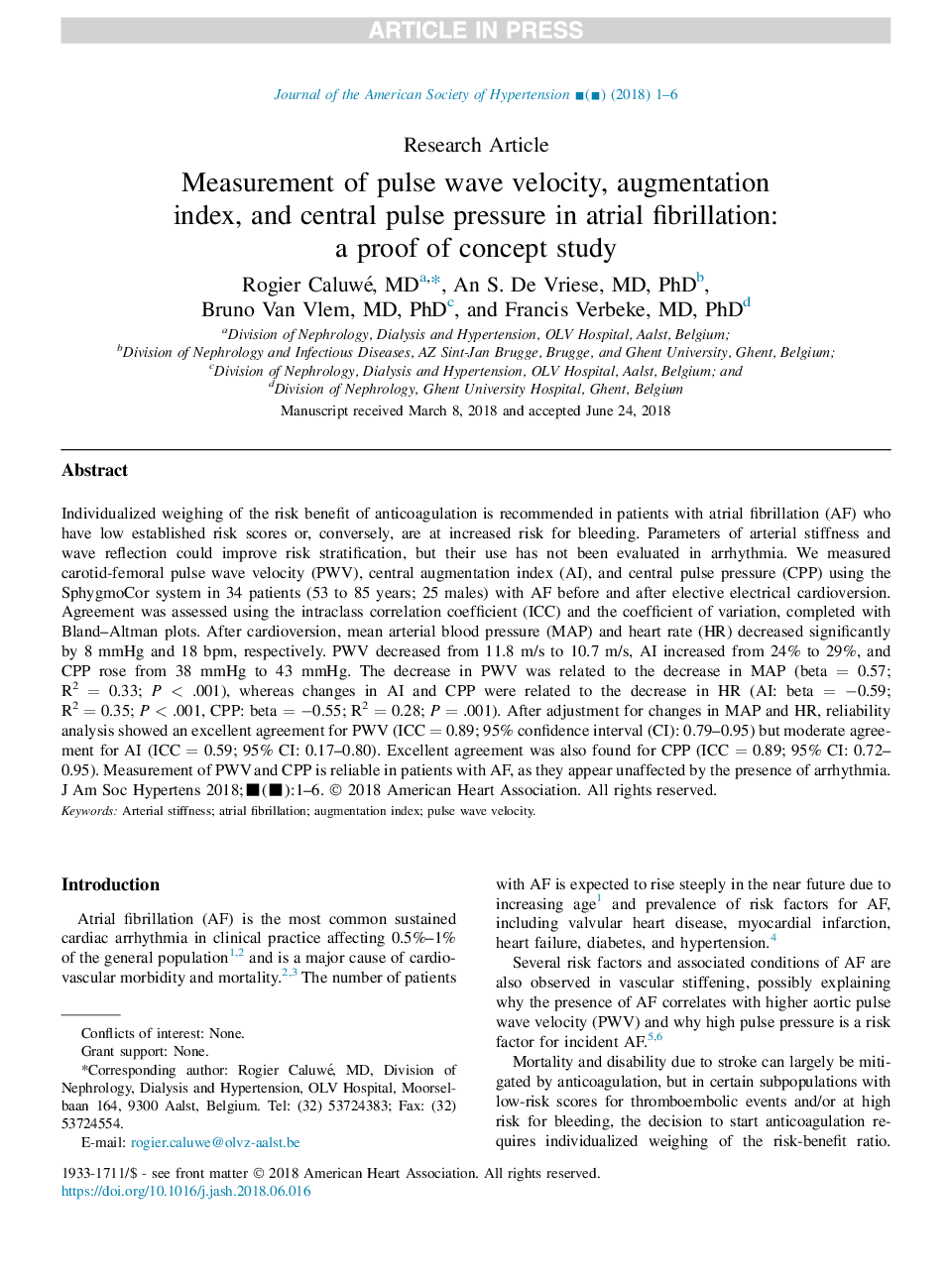| Article ID | Journal | Published Year | Pages | File Type |
|---|---|---|---|---|
| 10214040 | Journal of the American Society of Hypertension | 2018 | 6 Pages |
Abstract
Individualized weighing of the risk benefit of anticoagulation is recommended in patients with atrial fibrillation (AF) who have low established risk scores or, conversely, are at increased risk for bleeding. Parameters of arterial stiffness and wave reflection could improve risk stratification, but their use has not been evaluated in arrhythmia. We measured carotid-femoral pulse wave velocity (PWV), central augmentation index (AI), and central pulse pressure (CPP) using the SphygmoCor system in 34 patients (53 to 85 years; 25 males) with AF before and after elective electrical cardioversion. Agreement was assessed using the intraclass correlation coefficient (ICC) and the coefficient of variation, completed with Bland-Altman plots. After cardioversion, mean arterial blood pressure (MAP) and heart rate (HR) decreased significantly by 8 mmHg and 18 bpm, respectively. PWV decreased from 11.8 m/s to 10.7 m/s, AI increased from 24% to 29%, and CPP rose from 38 mmHg to 43 mmHg. The decrease in PWV was related to the decrease in MAP (beta = 0.57; R2 = 0.33; P < .001), whereas changes in AI and CPP were related to the decrease in HR (AI: beta = â0.59; R2 = 0.35; P < .001, CPP: beta = â0.55; R2 = 0.28; P = .001). After adjustment for changes in MAP and HR, reliability analysis showed an excellent agreement for PWV (ICC = 0.89; 95% confidence interval (CI): 0.79-0.95) but moderate agreement for AI (ICC = 0.59; 95% CI: 0.17-0.80). Excellent agreement was also found for CPP (ICC = 0.89; 95% CI: 0.72-0.95). Measurement of PWV and CPP is reliable in patients with AF, as they appear unaffected by the presence of arrhythmia.
Related Topics
Life Sciences
Neuroscience
Endocrine and Autonomic Systems
Authors
Rogier MD, An S. MD, PhD, Bruno MD, PhD, Francis MD, PhD,
